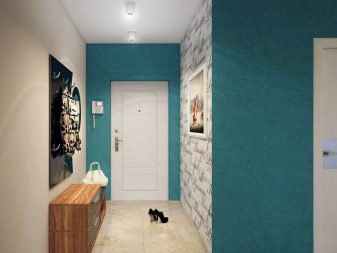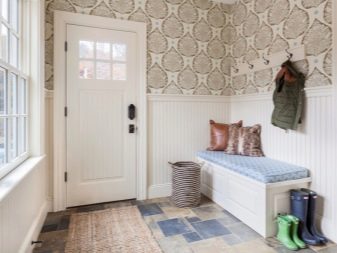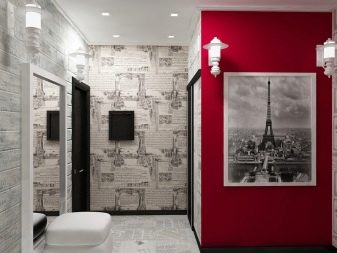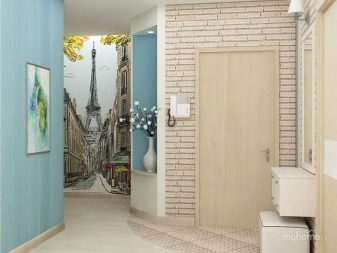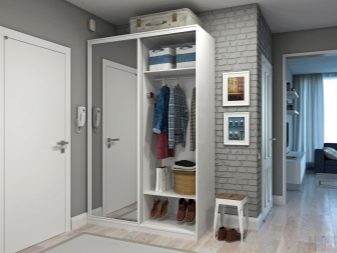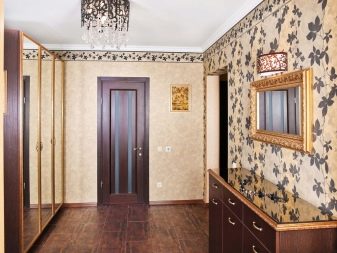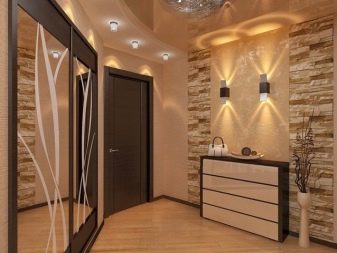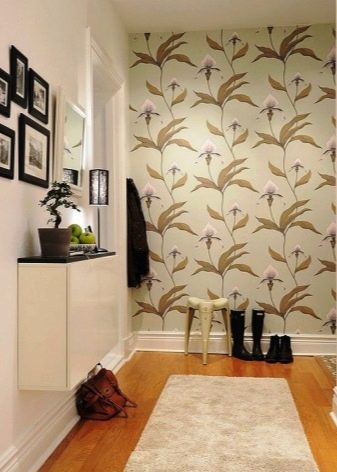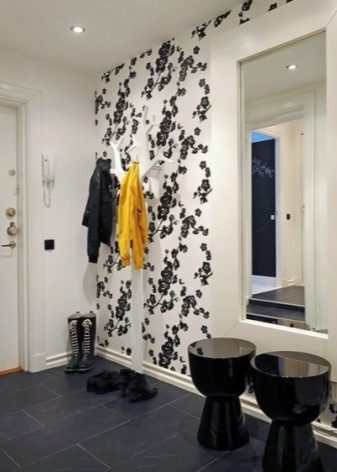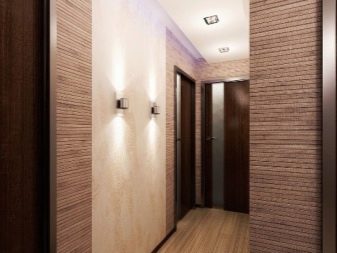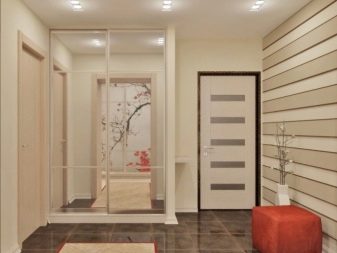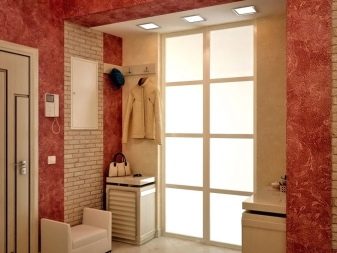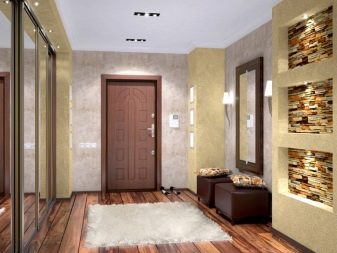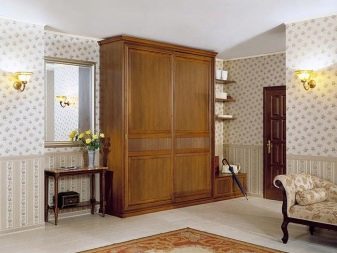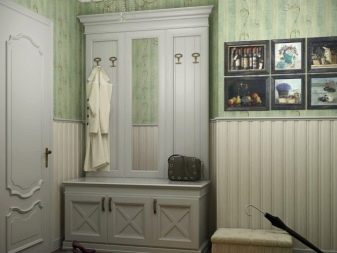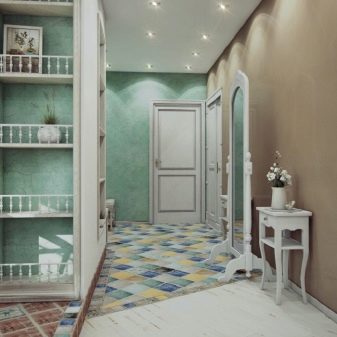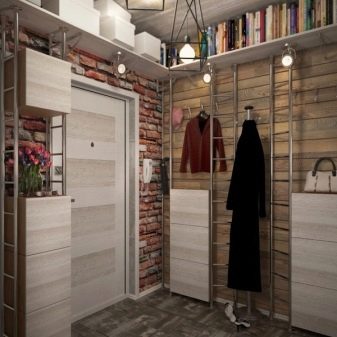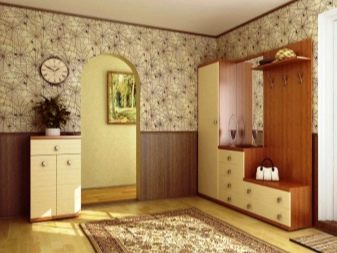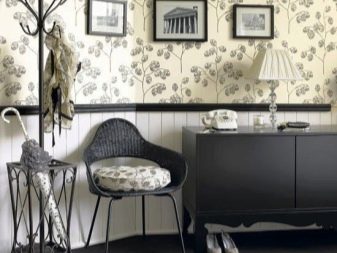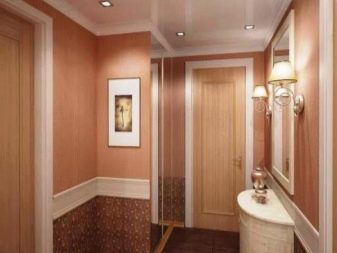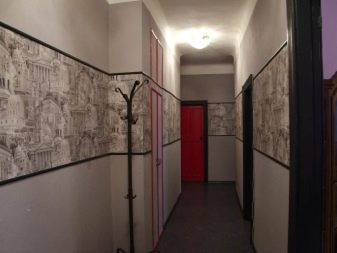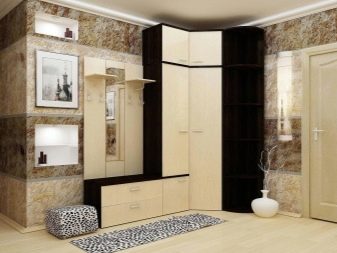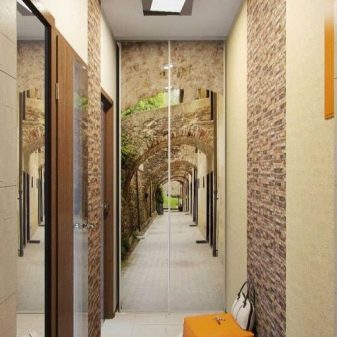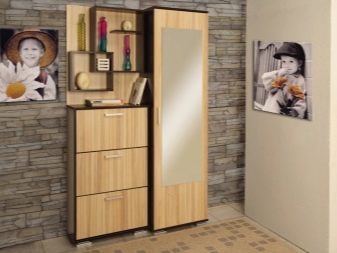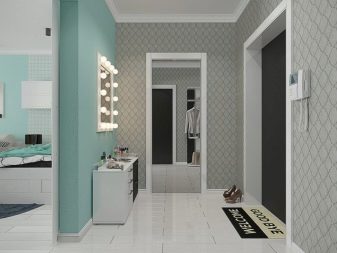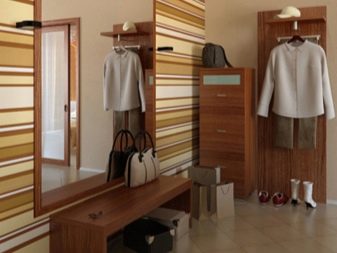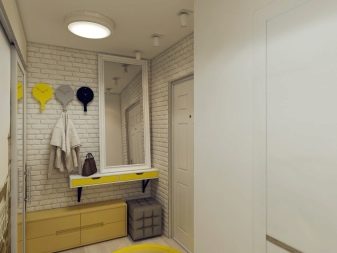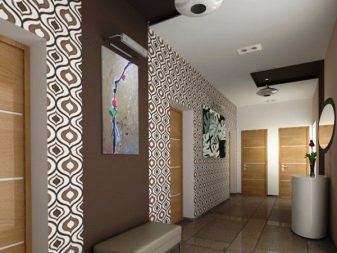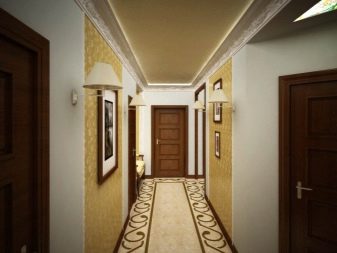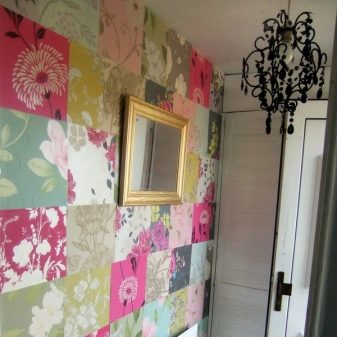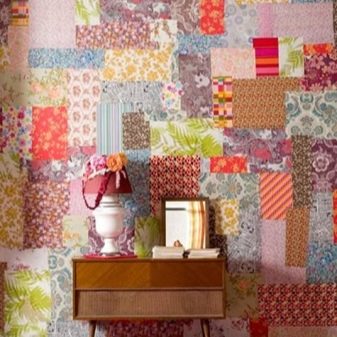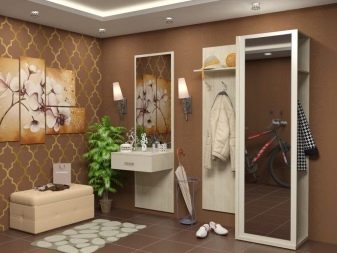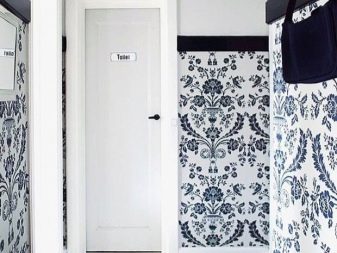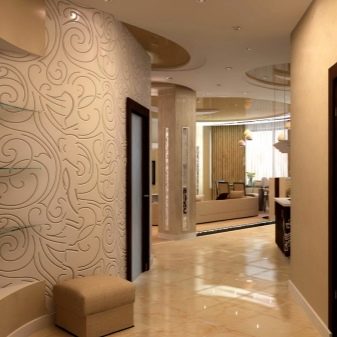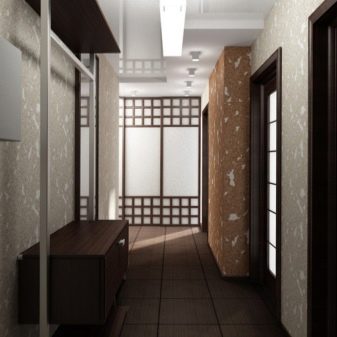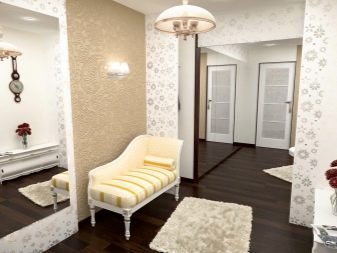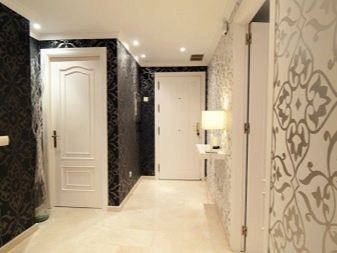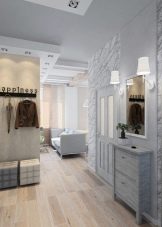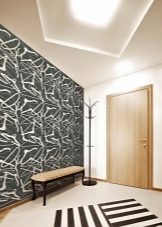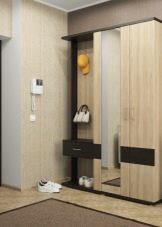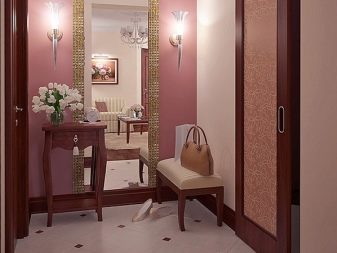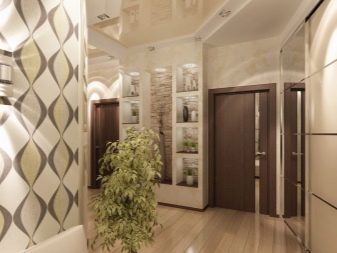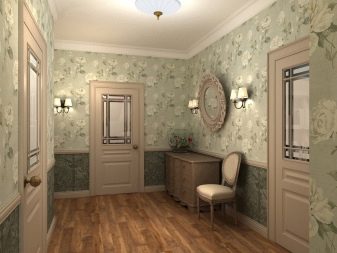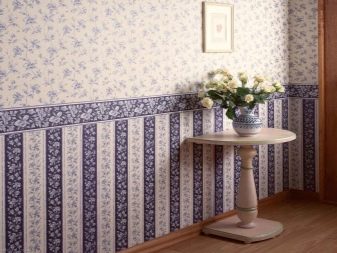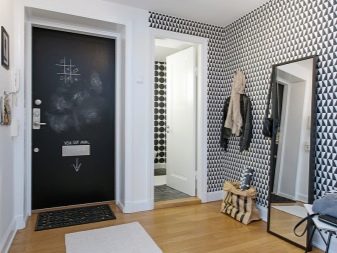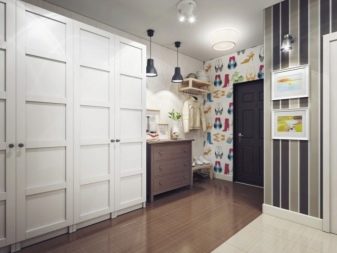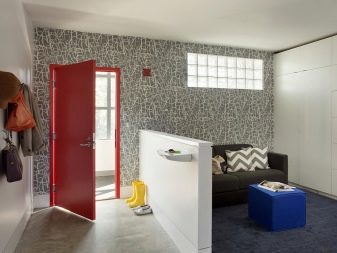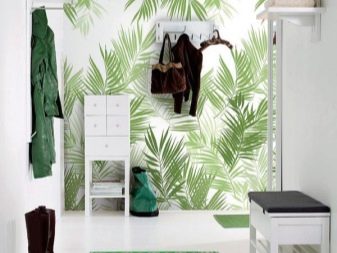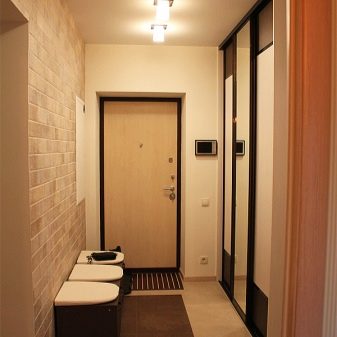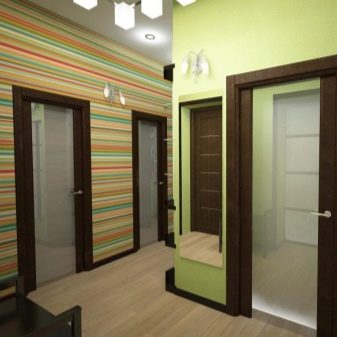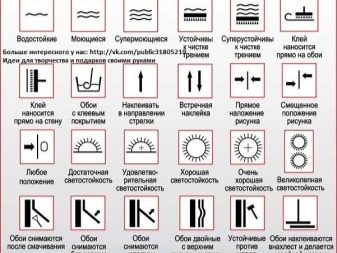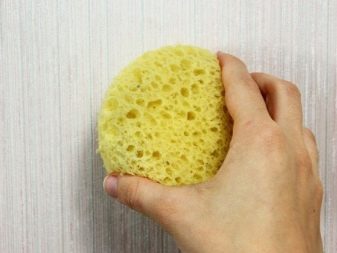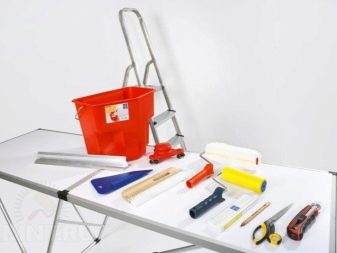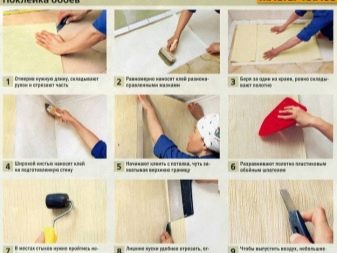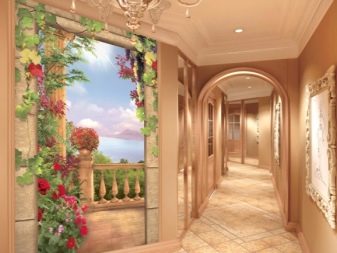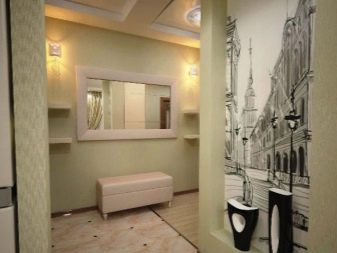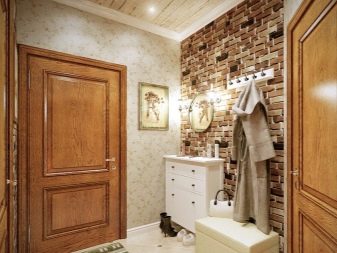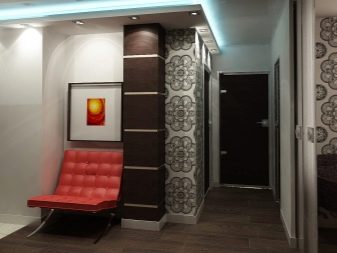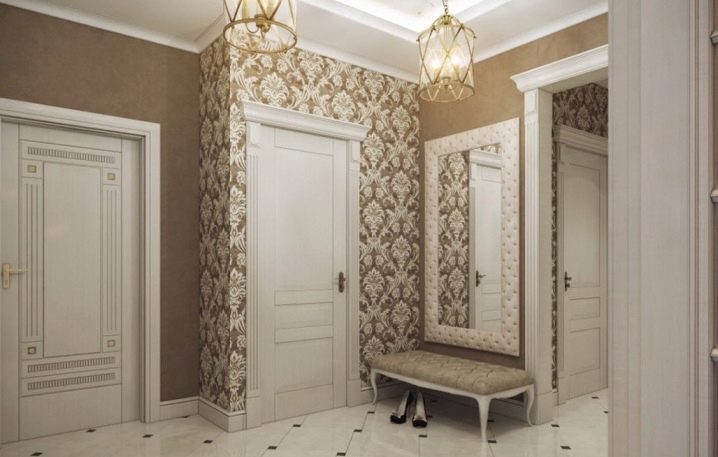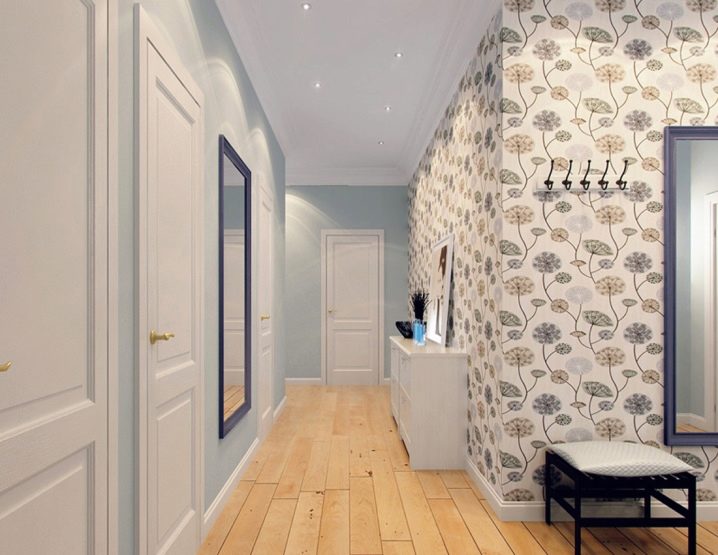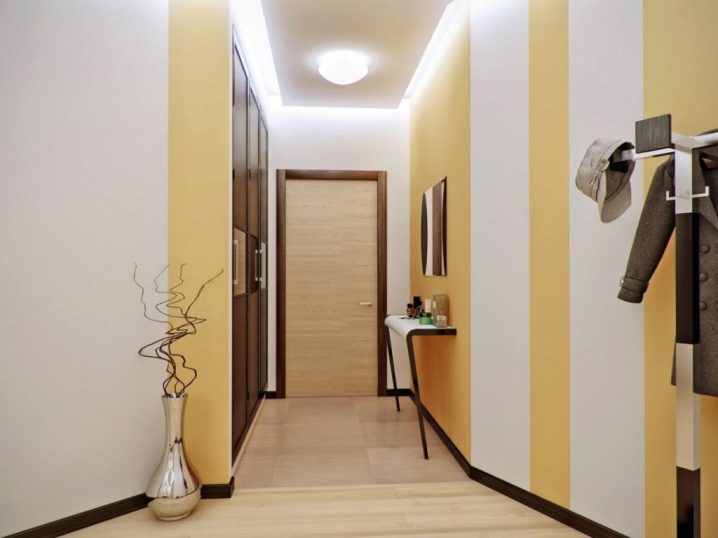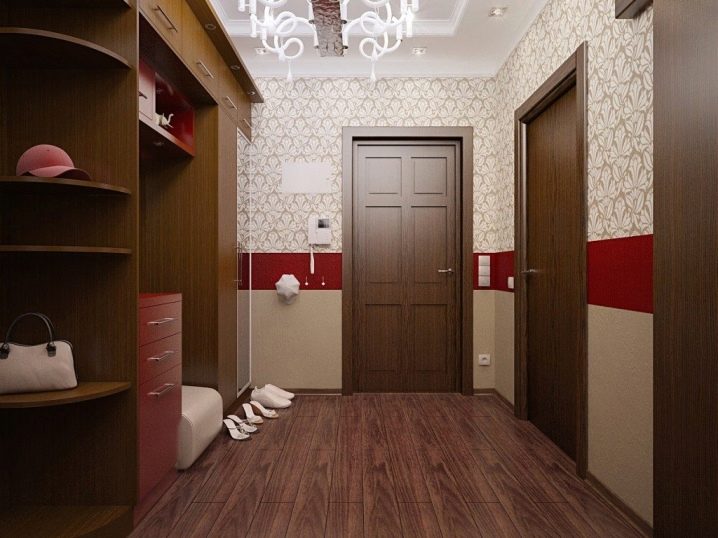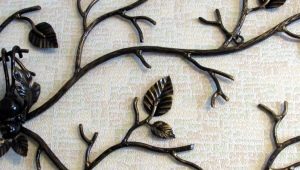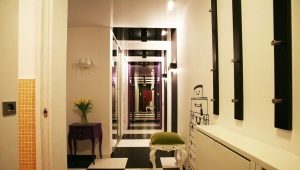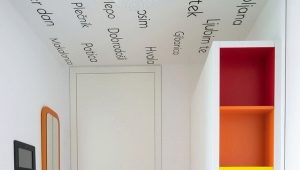Design of the corridor in the apartment with a combined wallpaper
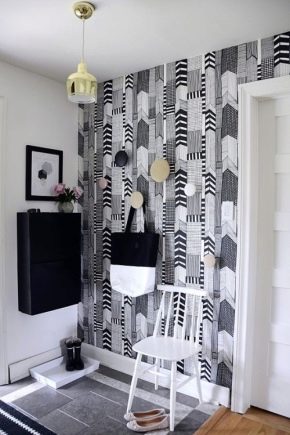
Hallway - the first place that a person sees when entering the house. Make the corridor an attractive and unusual design with a combined wallpaper.
Benefits of combining
The interior of the apartment begins with the design of the hallway. She sees off and meets the owners every day, forms the first impression of the guests' house. The original design of this room can not only “revive” the interior, but also correct the flaws in the layout. Combining wallpaper - the most optimal for the price and ease of implementation of the option of an interesting finish.
Its advantages have long been appreciated both by professional designers and people who prefer to do the repair themselves.
- Style. Simple combination techniques allow making the room individual and attractive, emphasizing the personal taste of the home owner.You can also pay attention to the style of the room. For example, floral patterns will complement eco-style, contrasting shades will emphasize the influence of modernity, and restrained bands will demonstrate commitment to the classics.
- Optical effect. This technique allows you to lighten the corridor, visually make it more spacious, increase the height of the ceilings, hide irregularities. Competently picking up wallpaper with a realistic pattern, you can even create the illusion of extra space and a special mood of the room.
- Zoning With the help of a bright shade or large print, you can draw attention to one of the walls or some part of it. Accents are often created on functional areas with a mirror or shelves. Also niches are allocated, a new geometry is created.
- Practicality. Placing a dark wallpaper in the lower part of the walls, you will protect your corridor from possible pollution, while the room will not seem bleak, because in the upper part will be located light colors.
- Affordable cost. Reception of a combination does not demand use of expensive materials. Even economy-class wallpaper with the right combination will provide the desired effect.
- The simplicity of the process. Unlike some methods of wall decoration, wallpapering does not require great skills and professional knowledge. Even complex combinations of combinations are done easily and quickly, you just need to mark up and paste the wallpaper in the required sequence.
On how to glue wallpaper, see the next video.
Ways
There are several options for the combination of wallpaper to achieve a harmonious interior.
- Horizontal separation of the wall into two parts. This way of decorating walls is now rare. It belongs to the classical direction in design and is not too suitable for modern styles. Nevertheless, the effect of solidity and elegant nobility, which gives this combination, still has its fans. In this case, the wall is divided into two parts: the lower one is about one meter in height from the floor, the rest of the wall belongs to the upper sector. According to tradition, below are darker wallpapers without a pattern. The top is decorated in a palette lighter, can have an elegant pattern. This distribution of colors makes the corridor lighter and more voluminous.
At the junction of the two parts is a decorative border. Usually it has a white color, although other options are possible (for example, in the color of the print).
- Horizontal stripes. Horizontal lines visually expand the space, but they can also visually reduce its height, therefore this method of decoration is recommended only in corridors with a decent level of ceilings. It can be a wide strip of wallpaper with a pattern, going in the middle of the wall and separating the plain wallpaper into two parts, or it can be alternating stripes of plain and colorful (or bright and neutral) canvases.
- Vertical stripes. This technique refers to the modern methods of decorating walls. It is able to increase the height of the room and hide the lack of decoration, drawing attention to the features of the design. Usually alternate either light and dark shades of one palette, or bright and neutral tones, or plain and printed wallpaper. The bands may be the same or different in width. The second option is more original. As a rule, this way not the whole corridor is made, but only one wall.
- Zoning A variety of vertical combination - the selection of individual areas of the room. It can be a whole wall or a part of it. In addition to giving the hallway originality, this method can significantly correct its shortcomings. Small corridor visually increases. A square-shaped room becomes more harmonious if one wall is darkened, leaving the rest light. Such a reception is also relevant for spacious halls with a small amount of furniture. The combination of shades and textures allows you to make such a hallway less empty, to give it coziness and a bright personality. Also, zoning highlights important parts of the room and places accents: for example, you can select an area with a clothes hanger, effectively mark a niche or a section of a wall with shelves.
- Accentuation. An interesting way is to place on the general background of individual inserts. This technique is similar to zoning, but here the emphasis is not on the allocation of corridor zones, but on its decoration. This includes the use of photo wallpaper, as well as inserts of textured patterned wallpaper in the form of original panels or paintings.The first option is used in modern interiors, the second refers to the classics.
Inserts in this case are made with moldings and frames.
- Patchwork. Registration of hallways in such a technique - a rarity. Usually, children’s and kitchens are made this way, however, if you wish, you can apply this method in the corridor. The second name patchwork - "patchwork", and this is not by chance. The wall, pasted over with small fragments of different wallpaper, creates just such associations. It is not necessary to arrange in this technique all the walls of the hallway, it is better to allocate for this one wall. In addition, designers are not advised to use more than 3-4 types of "rags". So that the wall does not irritate with its variegation, it is better to select wallpapers of similar colors, combined with some common parameter.
The rules of combining between two types
To design a hallway turned out harmonious, you should follow some simple rules.
- Wallpapers should be combined in color or texture. When combining relief and smooth coatings, it is worth using only monochrome types, but if monochromatic and printed wallpapers are used, they should have the same texture.
- Typically, wallpaper combinations of the same type are used for combinations. If you decide to go the other way, assess the thickness of the purchased materials. If it is the same, it will save you from the problems of masking irregularities at the place of the union of two different canvases.
- It is also important to pay attention to the nature of the surfaces. Glossy wallpaper in the light will shimmer and create glare, so it is not recommended to use them in small rooms where this effect is undesirable. Combining such wallpaper with matte is also very careful and only in the spacious halls.
How to choose colors?
Small corridors need visual expansion, so an excellent option for a small hallway would be a combination of bright colors (monophonic and with patterns). The task perfectly cope beige, cream, light blue, light pink and other pastel colors. Dark and too bright colors are irrelevant in this case. They only exacerbate the situation, creating the effect of even greater crowding. If the entrance hall is spacious enough, the color choices are limited only by personal taste and the style of the room.
- The combination of beige and brown, pale blue with rich turquoise, cream and burgundy fits perfectly into the classic interior.
Appropriate gold and silver patterns, decorative borders of white and other suitable colors.
- For the Provence style, combinations of white with blue, pistachio, light gray, as well as beige and other pastel tones are typical. As pictures you should choose floral and floral motifs.
- Modern styles allow any combination. This black and white gamma, and metallic, and all sorts of prints. Bright shades are allowed, but it is worth remembering that it is better not to use too saturated colors in small rooms.
Also with caution should be chosen for the hallway white wallpaper. After all, the corridor is a place of constant crowds of people, and in this case it will not be easy to maintain the immaculate cleanliness of the walls. In extreme cases, try not to have white areas near the entrance door.
The simplest and recommended combination includes two wallpaper options. In some cases, three colors are acceptable, but no more, otherwise, instead of a harmonious combination, you can get tasteless variegation.If it is difficult for you to decide on the choice of components of a combination, stop at the options of one color range (monophonic and with a print), or look at examples of companion colors from popular manufacturers.
Recommendations
In order for the design result to be successful and to please you for a long time, it is worth considering some professional advice.
- Purchase only high-quality, durable materials that are resistant to moisture and allow for easy cleaning. It is not necessary to glue up the entire corridor with moisture-proof wallpaper, but it is advisable to arrange them in places especially prone to pollution.
- Before the process of sticking cloths put a markup on the walls. All lines must be measured from the floor, focusing on its level. This will ensure a perfectly even arrangement of lanes.
- If you decide to use wallpaper, choose images on the themes of the city and nature. Photos of flowering alleys and beautiful streets can not only decorate the corridor, but also visually expand the room.
- The design of the hallway should be in harmony with the general style of the house.
Do not forget also about the combination of shades of walls with the color of the furniture.
Beautiful ideas sticking to the interior
The interior in beige and white colors is a universal option. Light floor and doors visually increase the space. Dark beige wallpaper creates a soft but dramatic contrast. A colored print highlights the protruding part of the wall with a door leading to the bathroom. This decor corridor combined wallpaper will be appropriate even in the "Khrushchev", where every meter counts.
A great example of a Provence design is the wooden floor, the floral print and a soft blue scale. Snow-white doors and a chest of drawers harmoniously complete the composition.
The combination of white and yellow stripes visually enlarges a narrow corridor, as if filling it with light. The door, the elegant console and the built-in wenge-colored wardrobe perfectly fit into the interior.
But a successful combination of three types of wallpaper in the same room. The maroon-red stripe plays the role of a separator for monochromatic wallpapers and coverings with an inconspicuous pattern. The ideally matching beige shade of the first and second materials provides a harmonious combination without excessive variegation.

